Introduction
In the fast-paced building industry, embracing innovative technologies and tools is crucial for promoting efficiency and establishing dynamic workflows. One significant advancement that became common among engineers and architects during the last decade is the use of computational and parametric design. This philosophy enables the optimization of processes and workflows, but also benefits interdisciplinary collaboration, both key aspects in the industry.
In the realm of structural engineering the use of computational and parametric design processes and tools allows not only to generate parametric calculation models – defined by parameters such as geometry, loading, and structural constrains – but also facilitates post-processing and visualization of results in ways that are more relevant to the specific project or task. This facilitates the swift exploration of design alternatives and the optimization of structural performance.
This article explores the principles, tools, and applications of parametric modelling and computational design in structural engineering, highlighting their transformative impact on the industry.
Understanding Parametric Design
Tedious design iterations and modifications, the need for rework due to last-minute changes, mistakes, or inaccuracies; all sound too familiar and sometimes inevitable. But the impact of all these can be held to a minimum, and frustration to low levels, while engineers free up valuable time to focus on more creative design aspects.
Parametric design is a method that uses algorithmic thinking to define and manipulate parameters and rules, creating digital models that adjust automatically when parameters change. This approach enhances flexibility, efficiency, and precision, allowing designers to explore numerous options and quickly iterate through variations. By setting parameters like dimensions, materials, and loads, parametric design ensures consistency and accuracy, optimizes material usage - adhering to sustainable practices – and integrates seamlessly with other digital design and analysis tools, streamlining the design and engineering workflow.
It is common for design decisions to be influenced by the interplay between form and function, with the scale often tilting heavily towards one side or the other. With parametric design, the gap between the two worlds is smaller than ever. Architects and structural engineers can work closely together to establish parameters that affect the structure geometry and efficiently set up an all-encompassing parametric model, exploring design alternatives that fulfil both visions.
Design iterations can be generated with minimal effort, enabling structural engineers to quickly provide feedback on the implications of parameter changes, both structurally and architecturally. This process supports rapid prototyping and fosters a dynamic, collaborative workflow between disciplines, thereby facilitating effective decision-making.
In the realm of structural engineering, parametric design offers several valuable advantages, such as:
- Enhanced Design Flexibility
Easily modify and experiment with design parameters, leading to more efficient structural solutions.
- Efficiency in Iterations
Facilitates rapid generation of design iterations, enabling structural engineers to quickly evaluate multiple options and refine their designs based on performance criteria.
- Automation of Repetitive Tasks
Automates routine and repetitive design tasks, such as the sizing of elements and the generation of detailed drawings, reducing the potential for human error and freeing up time for more creative problem-solving.
- Integration with Analysis Tools
Seamlessly connecting with structural analysis software, allowing for real-time performance evaluation as design parameters are altered, thus ensuring that the structure meets all required safety and reliability standards.
- Optimization of Material Usage
Optimizing material usage by allowing engineers to run topology and member design optimization algorithms testing various configurations to achieve the most effective material distribution.
- Cost Reduction
By optimizing designs and reducing material waste, parametric modelling can significantly lower the overall cost of projects.
- Scalability of Design
Parametric principles can be applied at various scales, from individual components to entire structural systems, ensuring consistency and integration across the project.
- Adaptability to Changing Requirements
Enables designs to be easily updated or reconfigured in response to changes in project requirements or external conditions, enhancing the adaptability of the engineering workflow.
- Improved Collaboration
Facilitates better collaboration among different stakeholders (architects, engineers, contractors) by providing a shared, updatable model that integrates different aspects of the structural design.
- Environmental sustainability
Supports sustainable design practices by enabling material optimization and carbon footprint reduction.
Challenges and considerations
While parametric and computational design offer numerous benefits, they also present several challenges and considerations that must be addressed to maximize their potential:
- Evaluating Task-Specific Benefits:
Not all tasks may benefit equally from parametric design workflows. It is fundamental to carefully evaluate the value of implementing parametric design for specific tasks to determine if the benefits outweigh the efforts and resources required. This evaluation ensures that parametric design is applied where it can deliver the most significant advantages and improve overall project efficiency.
- Data Management and Collaboration:
Effective parametric design relies heavily on accurate and comprehensive data. Managing and maintaining this data, especially in large and complex projects, can be challenging. Ensuring data integrity and consistency is crucial for successful implementation. Additionally, fostering a collaborative environment where data is easily shared and understood among team members is essential for coordinated efforts and successful outcomes.
- Integration with Existing Workflows:
Integrating parametric design tools with existing workflows can be complicated. Ensuring seamless interoperability and data exchange between new parametric tools and established software platforms (e.g., BIM, CAD, FEM software) is essential for maintaining efficient workflows. The integration process shall be planned to avoid disruptions and maximize the benefits of new technologies.
- Transitioning from Traditional Workflows:
Transitioning from traditional workflows, such as using Excel for design tasks and data management, to more advanced computational tools like Python, can be a significant change. This transition requires training and adaptation to new methods, which can be time-consuming and initially disruptive. Engineers must be supported through this transition with adequate training and resources to ensure a smooth shift to more efficient and powerful workflows.
Integration of computational and parametric case studies at KI
At KI we believe in design flexibility and in the strength of collaborative work, and we always strive to create dynamic and efficient design process, as well as to foster interdisciplinary collaboration.
The implementation of computational and parametric design at KI began with the early adoption of coding to produce variations of Finite Element models during the T-Pylon development project. We’ve used the API of both SAP2000 and Robot Structural Analysis to create both global models of each tower, for a variety of geometry and loading configurations, but also to analyse global conductor behaviour for different tower sequences.
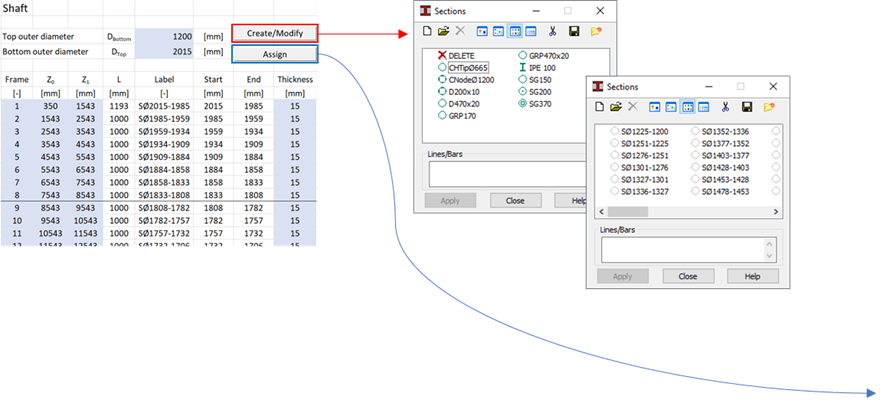
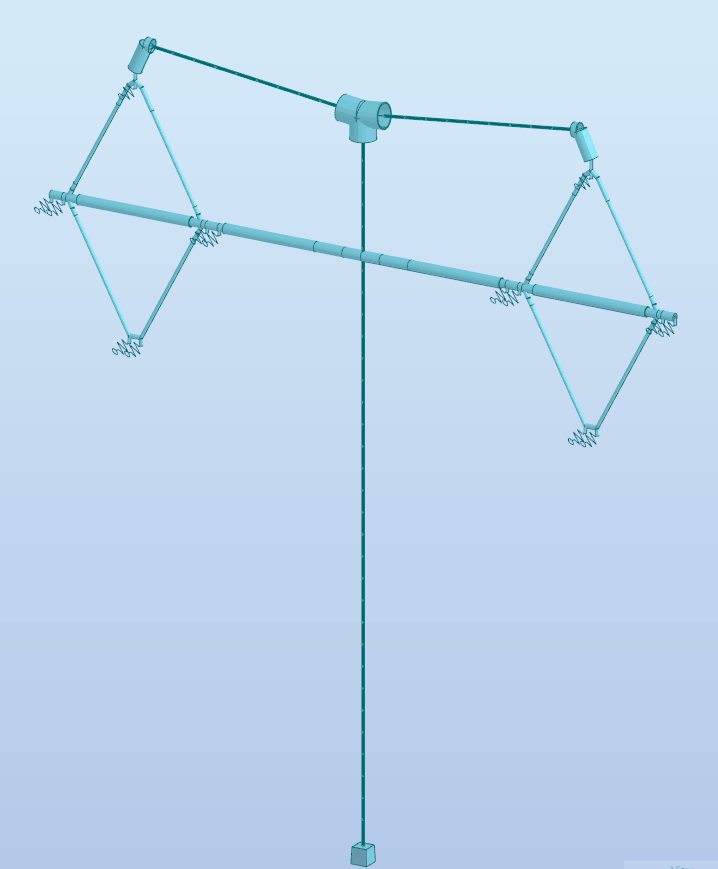
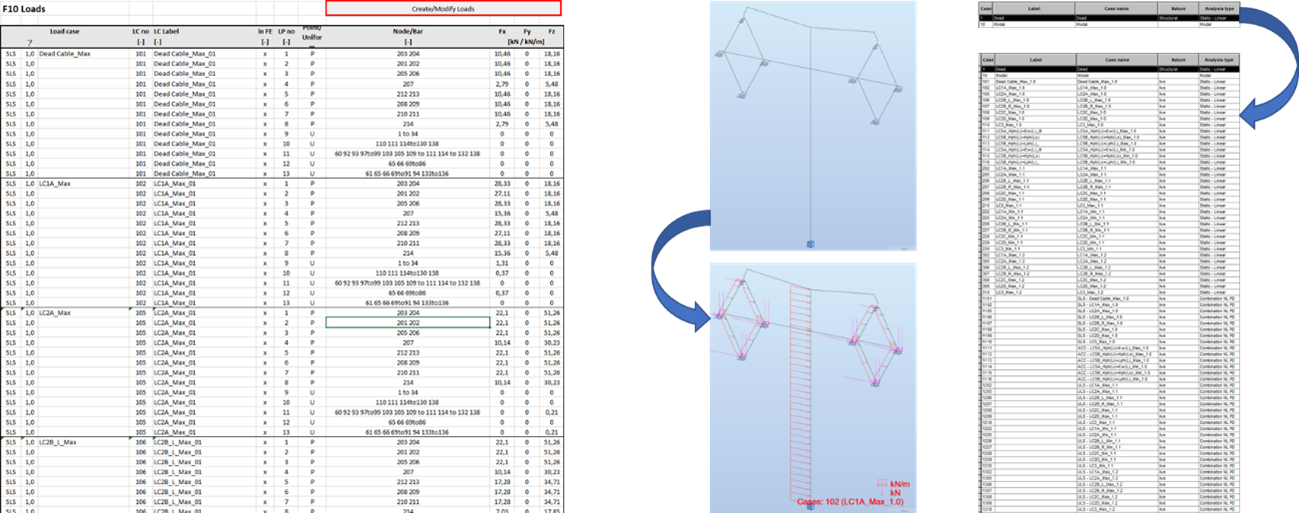
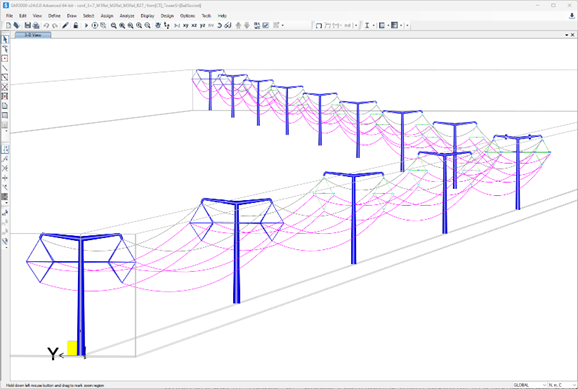
The philosophy remains the same today, but in addition to traditional programming and API manipulation, we take advantage of powerful in-line visual programming tools like Dynamo and Grasshopper.
These tools offer a wide range built-in functions to assist the user with geometry manipulation and model creation, while various add-ons can be imported and developed for an extended set of operations and efficient software interoperability.
The user is responsible for creating a blend of these functions, which are put in “nodes” or “blocks”, connecting them together in a logical order by means of some “wires”, to essentially define the flow of data and operations to be executed. This visual representation of the algorithm’s logic and functionality is more comprehensive and user-friendly, so even people inexperienced with programming techniques and languages can have hands-on interaction to generate complex geometries and automate repetitive tasks. This visual method of creating algorithms, instead of the traditional text-based coding is called Visual Programming. A simple example is presented below, where a simple truss tower structure is created in Dynamo.
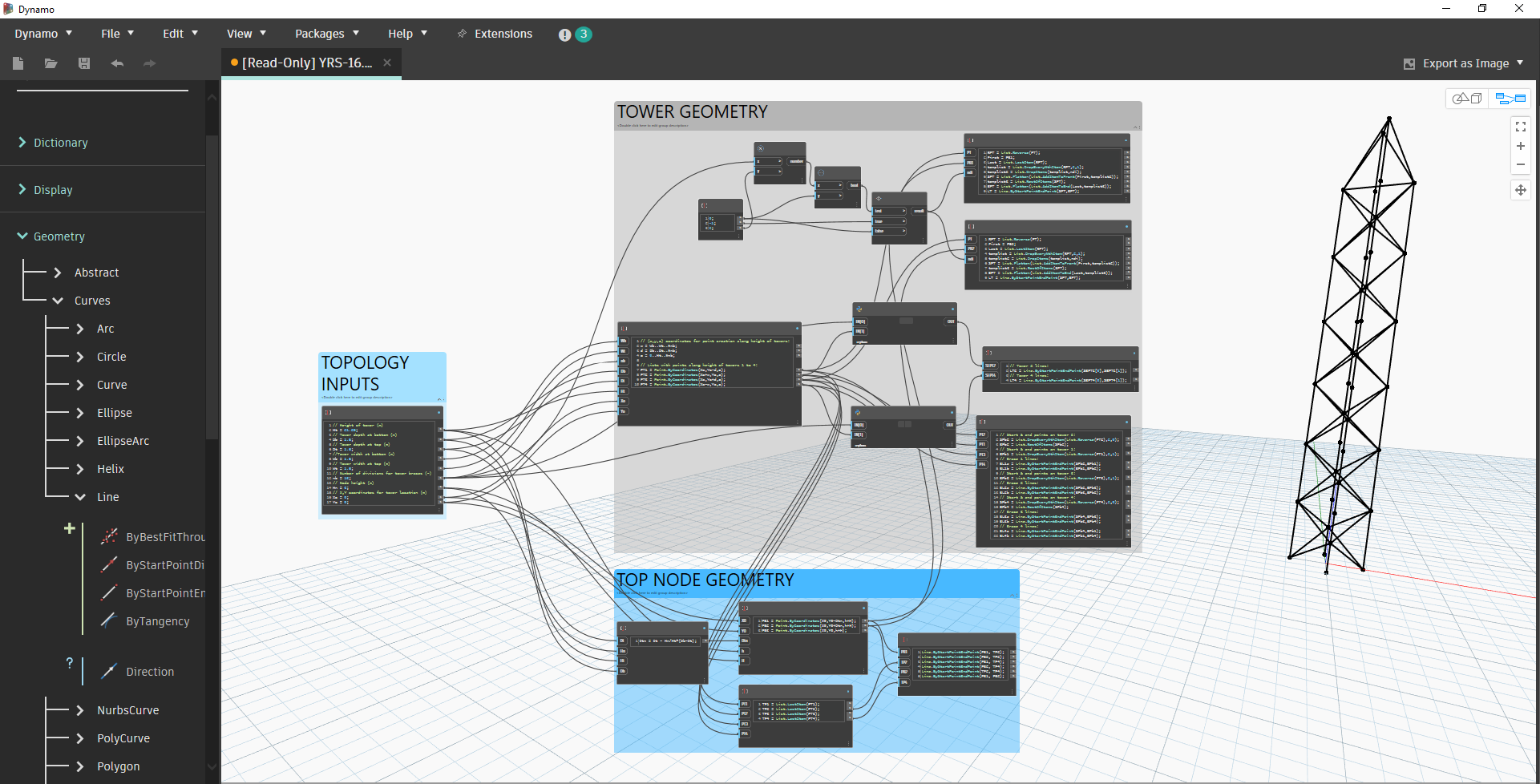
In the above example, the tower can be modified in many ways. For the example’s purpose, the chosen parameters are selected so that the user can change the following parameters:
- the cross-section of the tower at the base and at the top, via the definition of the diagonals of a rhombus (herein expressed as width and depth)
- the height of the main tower and its top node
- the number of braces, via the columns’ number of divisions
- the position of the structure in space
By changing a single input, the structure is modified immediately without the need for any manual effort in the FE application interface. As a demonstration, first, the cross-section of the tower is modified from a square to a rhombus.
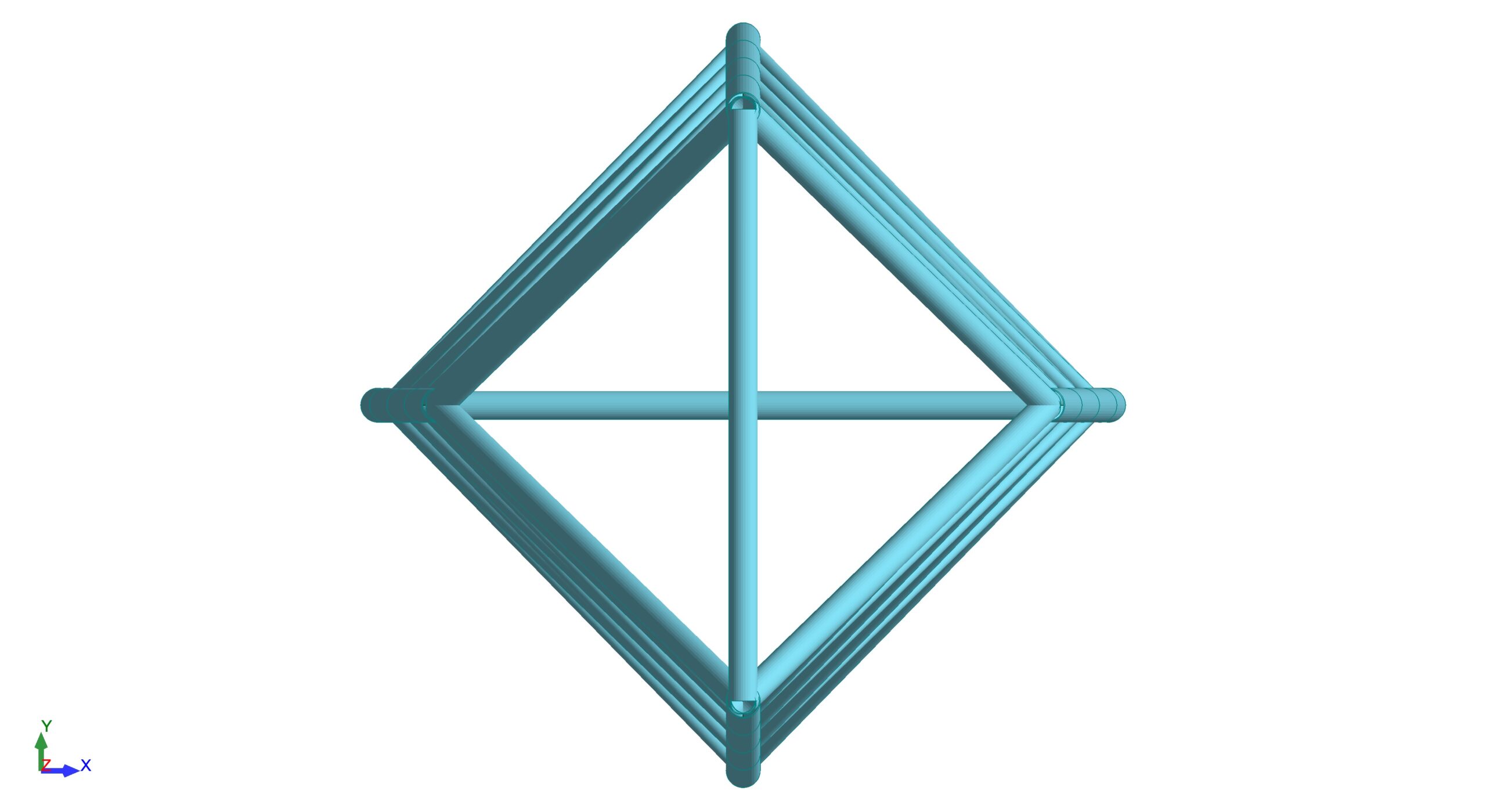
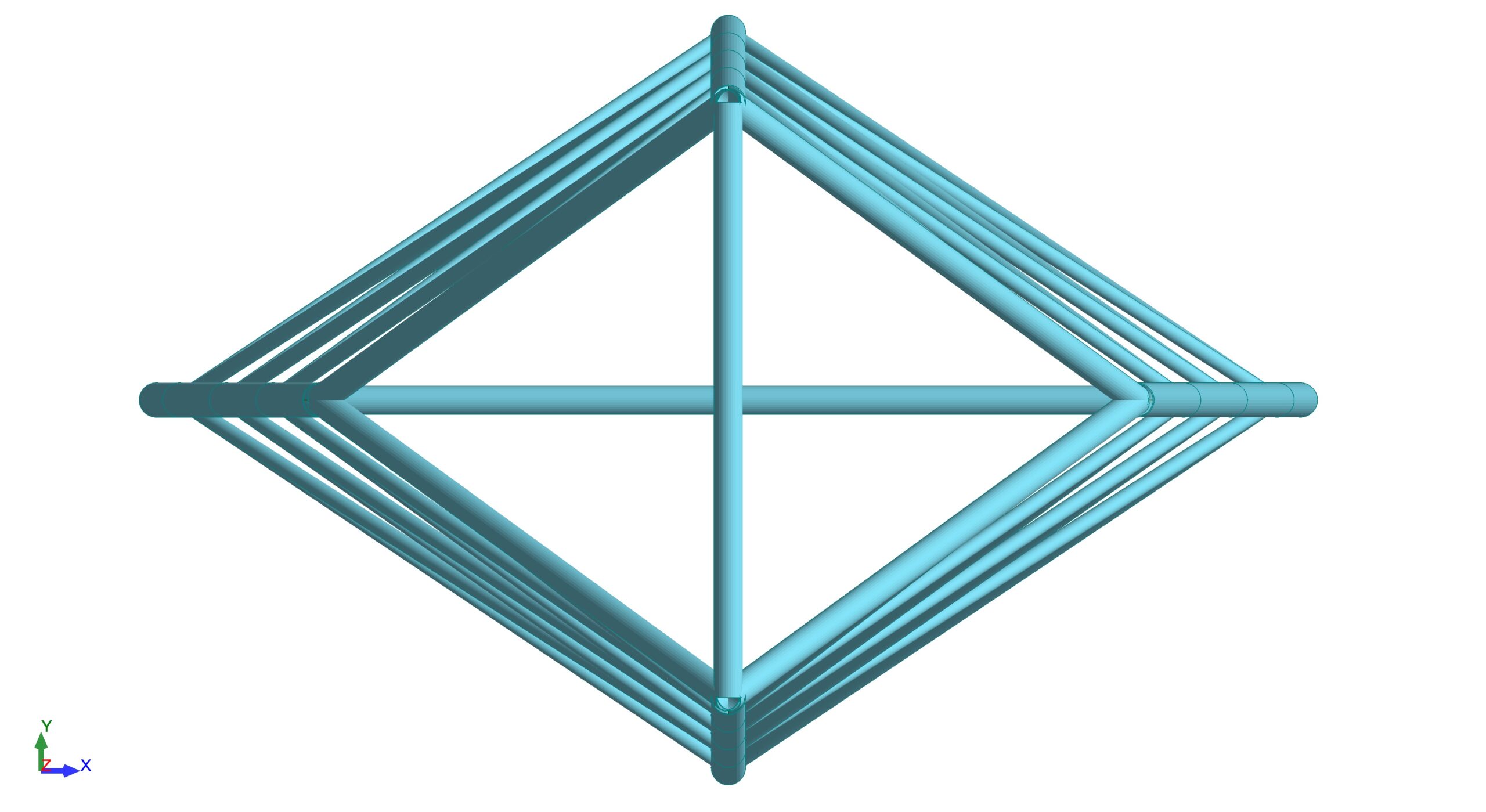
In the above example, the tower can be modified in many ways. For the example’s purpose, the chosen parameters are selected so that the user can change the following parameters:
- the cross-section of the tower at the base and at the top, via the definition of the diagonals of a rhombus (herein expressed as width and depth)
- the height of the main tower and its top node
- the number of braces, via the columns’ number of divisions
- the position of the structure in space
By changing a single input, the structure is modified immediately without the need for any manual effort in the FE application interface. As a demonstration, first, the cross-section of the tower is modified from a square to a rhombus.
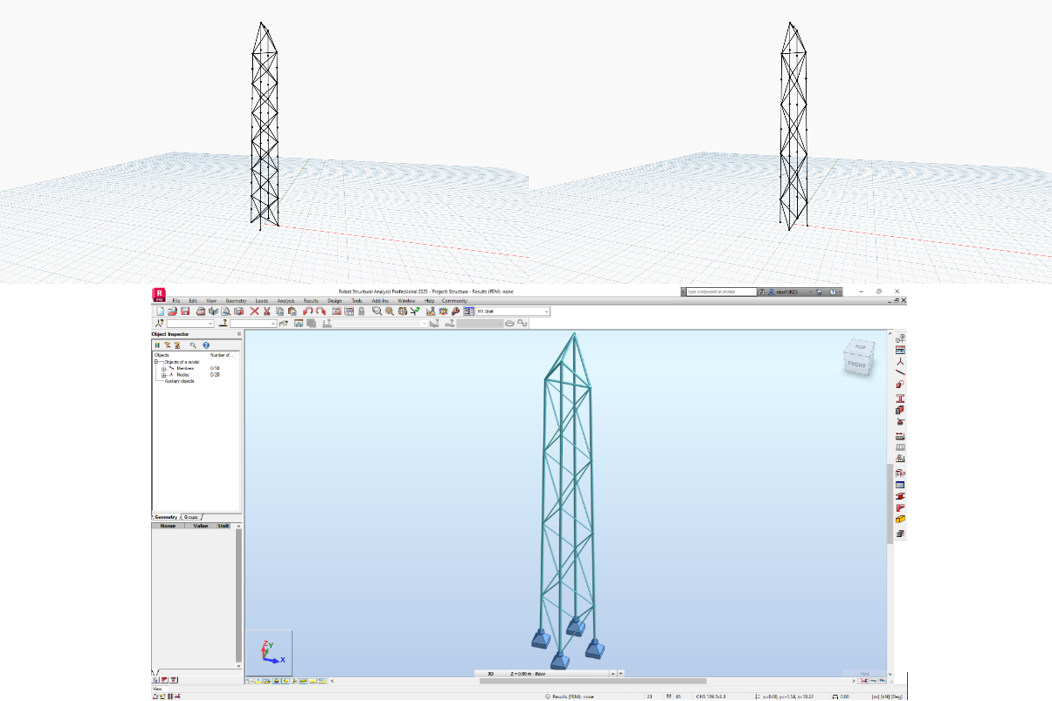
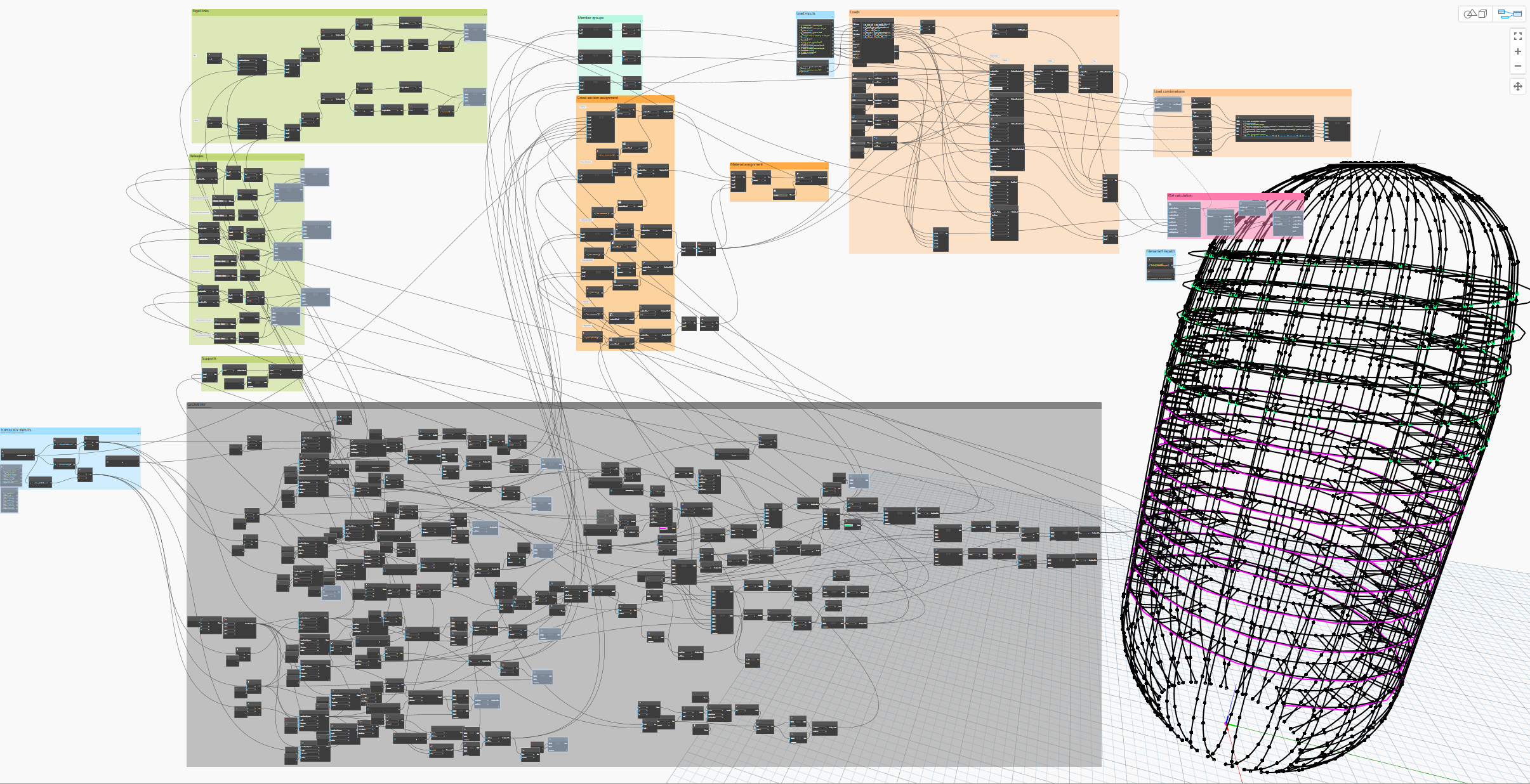
Even though add-ins to interface with Robot Structural Analysis (RSA) exist both for Dynamo and Grasshopper, many functions are not yes implemented as a built-in functionality. At KI we develop our own Python code to access missing functionalities though the API, overcoming limitations and extending the range of applicability. The integration of a powerful programming language such as Python unlocks limitless possibilities. With this method it is possible to achieve and automate everything that someone would normally do using the Graphic User Interface (GUI) of RSA.
Below is an example of a frame structure that was defined, analysed and optimized solely using Dynamo, with no human interaction with RSA. The optimization process includes also the selection of the optimal profile in terms of weight, for each member of the structure and for the given set of parameters:
- Clearance (hClear, wClear)
- Height of left leg (hL)
- Height of right leg (hR)
- Width of left column (wL)
- Width of right column (wR)
- Distance to top (wA)
- Top inclination (a)
- Bottom inclination (g)
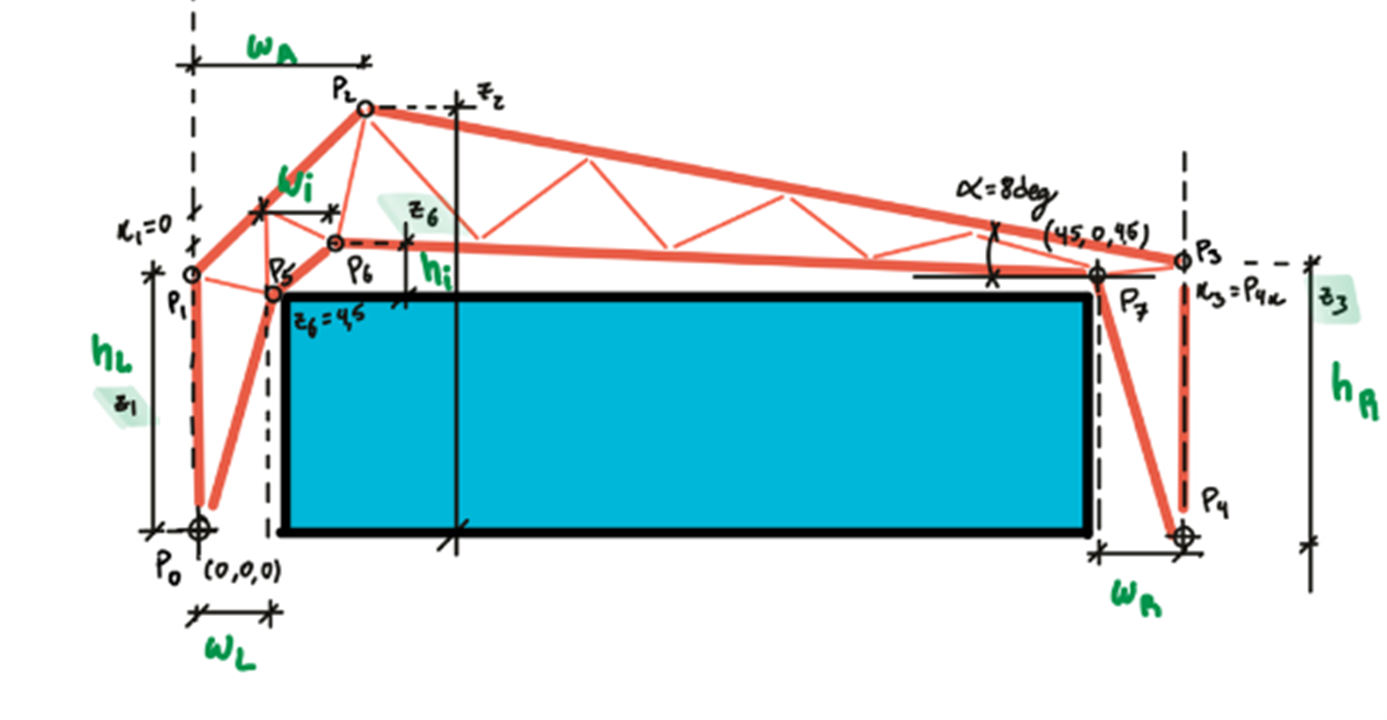


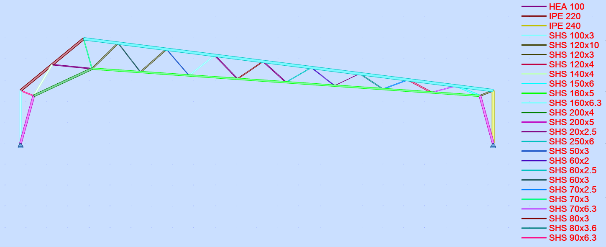
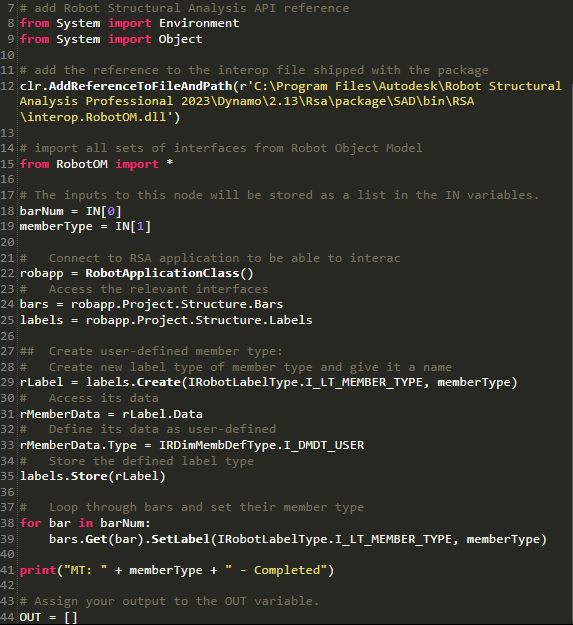
The previously displayed cases refer to beam model models, but complex shell models can be developed applying the same principles.
The newly installed pedestrian bridge at DTU is a great example of such model. In this case the parametric model allowed us to establish a dynamic collaboration with the architect team during the concept stage of the project. The parametric model proved essential in the form finding process, giving quick feedback – based on complex and accurate analysis – to geometry variations during this stage.
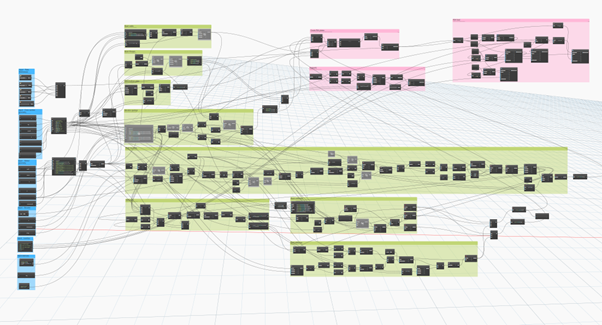
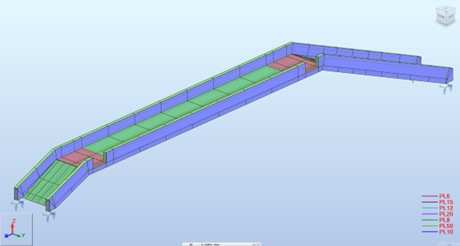

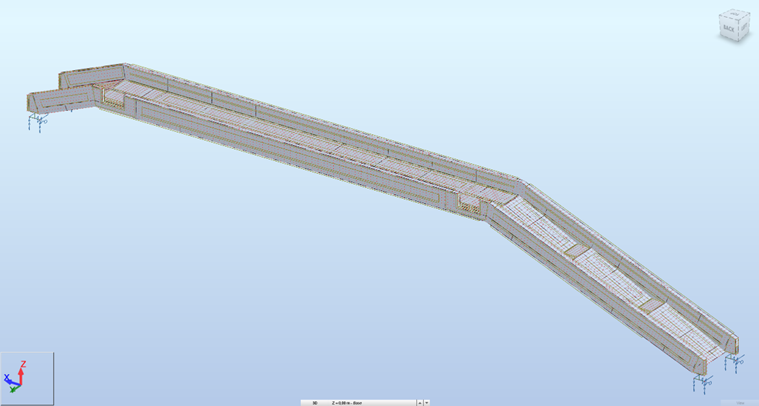
Other great example is the use of optimization routines, such as genetic algorithms, in search of optimal structural solutions, minimizing the material consumption and with it the carbon footprint and overall cost.
In the example below, a genetic algorithm was implemented using Grasshopper to evaluate the optimal frame configuration for a dual three hinge timber frame. The optimization consists of an holistic exercise to find the optimal frame spacing which will lead to the overall lowest material consumption, also considering secondary purlin elements, while maintaining a high degree of standardization.


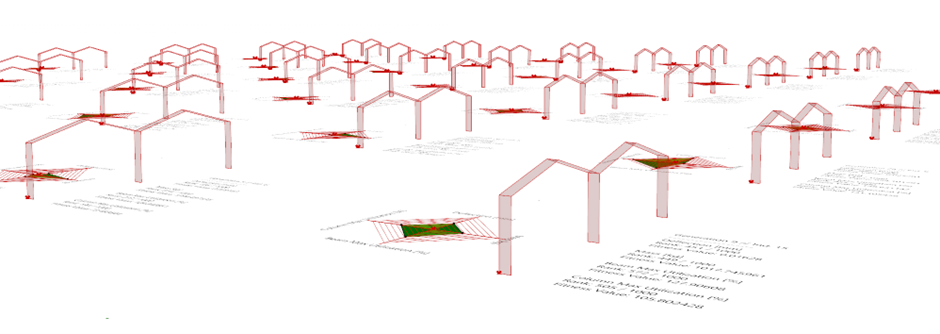
Our engineers take pride in developing new tools to customize the solution to project demands. It is always remarkable to see how some “spaghetti” strings and some code lines can translate into a complex 3D finite element model with the push of a button. The real satisfaction, though, kicks in when you change some parameters and, in a few seconds, you generate what would otherwise take hours.
Conclusion
The adoption of computational and parametric design has significantly transformed structural engineering. These methods enable efficient optimization of workflows, interdisciplinary collaboration, and rapid exploration of design alternatives. Parametric design enhances flexibility, precision, and integration with digital tools, supporting rapid prototyping and reducing errors.
However, implementing these approaches comes with challenges. Evaluating task-specific benefits, managing accurate data, integrating with existing workflows, and transitioning from traditional methods like Excel to advanced tools like Python are crucial steps.
At KI, we have successfully leveraged tools like Dynamo and Grasshopper, along with custom Python scripts, to automate tasks and foster dynamic collaboration. This approach has proven invaluable in various projects, demonstrating the power and flexibility of parametric design.
In conclusion, computational and parametric design are transformative approaches that enhance efficiency, creativity, and collaboration in structural engineering, driving the industry toward greater innovation and performance.
Software & Programming languages
Dynamo, Grasshopper, Robot Structural Analysis, Revit, Excel, Python, VBA


